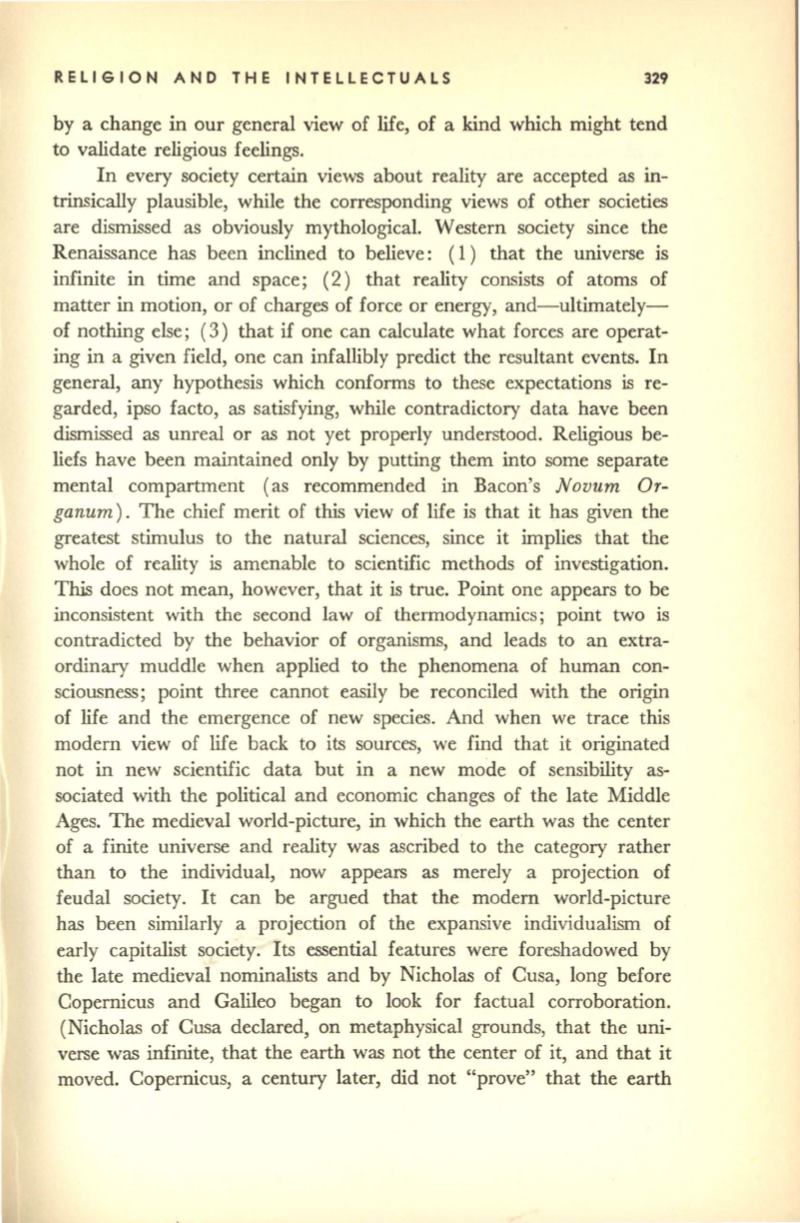
RELIGION AND THE INTELLECTUALS
329
by a change in our general view of life, of a kind which might tend
to validate religious feelings.
In every society certain views about reality are accepted as in–
trinsically plausible, while the corresponding views of other societies
are dismissed as obviously mythological. Western society since the
Renaissance has been inclined to believe: ( 1) that the universe is
infinite in time and space; (2) that reality consists of atoms of
matter in motion, or of charges of force or energy, and-ultimately–
of nothing else; ( 3) that if one can calculate what forces are operat–
ing in a given field, one can infallibly predict the resultant events. In
general, any hypothesis which conforms to these expectations is re–
garded, ipso facto, as satisfying, while contradictory data have been
dismissed as unreal or as not yet properly understood. Religious be–
liefs have been maintained only by putting them into some separate
mental compartment (as recommended in Bacon's
N
ovum
Or–
ganum).
The chief merit of this view of life is that it has given the
greatest stimulus to the natural sciences, since it implies that the
whole of reality is amenable to scientific methods of investigation.
This does not mean, however, that it is true. Point one appears to be
inconsistent with the second law of thermodynamics; point two is
contradicted by the behavior of organisms, and leads to an extra–
ordinary muddle when applied to the phenomena of human con–
sciousness; point three cannot easily be reconciled with the origin
of life and the emergence of new species. And when we trace this
modern view of life back to its sources, we find that it originated
not in new scientific data but in a new mode of sensibility as–
sociated with the political and economic changes of the late Middle
Ages. The medieval world-picture, in which the earth was the center
of a finite universe and reality was ascribed to the category rather
than to the individual, now appears as merely a projection of
feudal society. It can be argued that the modern world-picture
has been similarly a projection of the expansive individualism of
early capitalist society. Its essential features were foreshadowed by
the late medieval nominalists and by Nicholas of Cusa, long before
Copernicus and Galileo began to look for factual corroboration.
(Nicholas of Cusa declared, on metaphysical grounds, that the uni–
verse was infinite, that the earth was not the center of it, and that it
moved. Copernicus, a century later, did not "prove" that the earth


